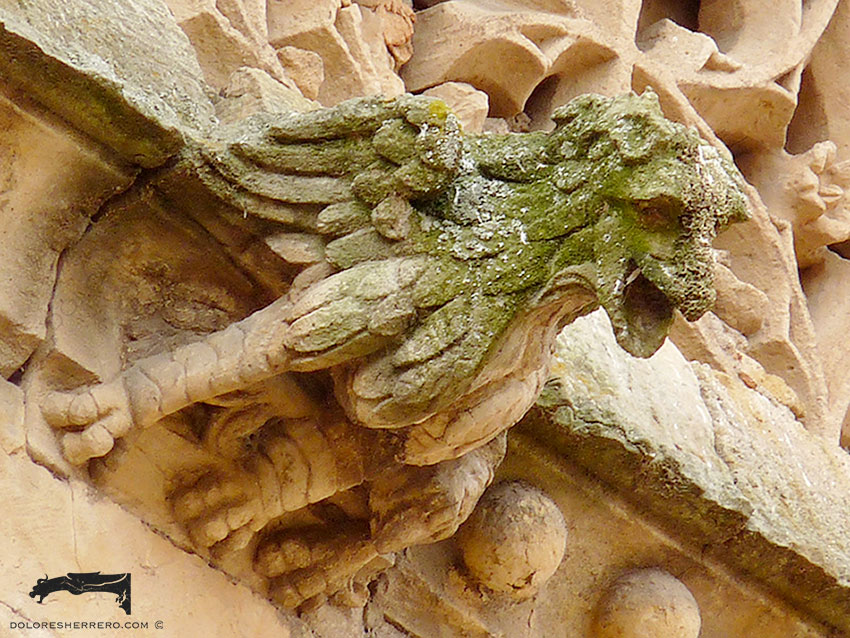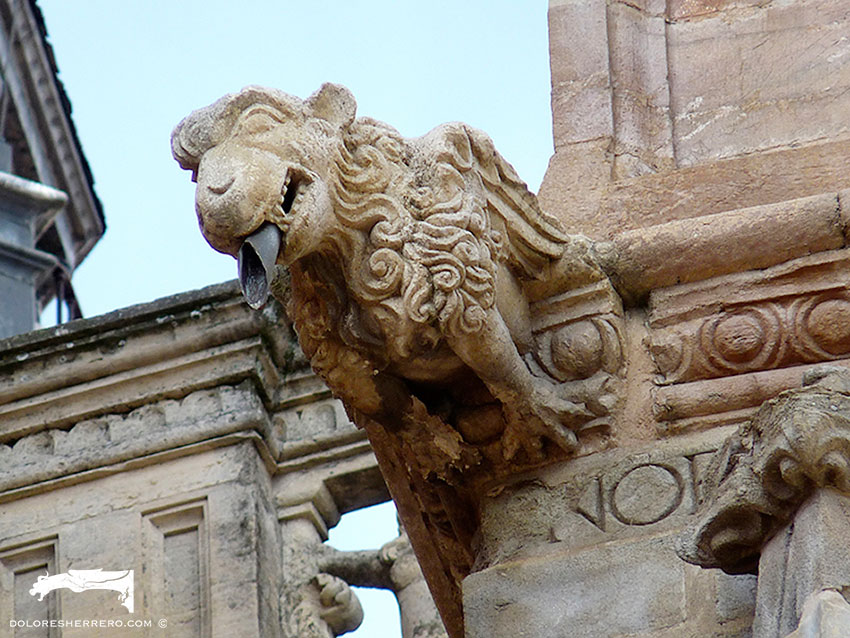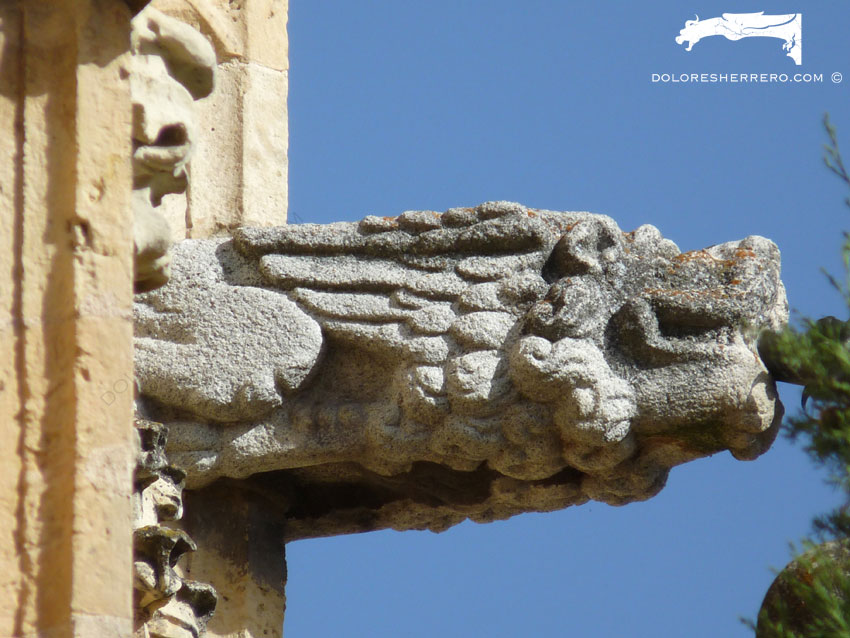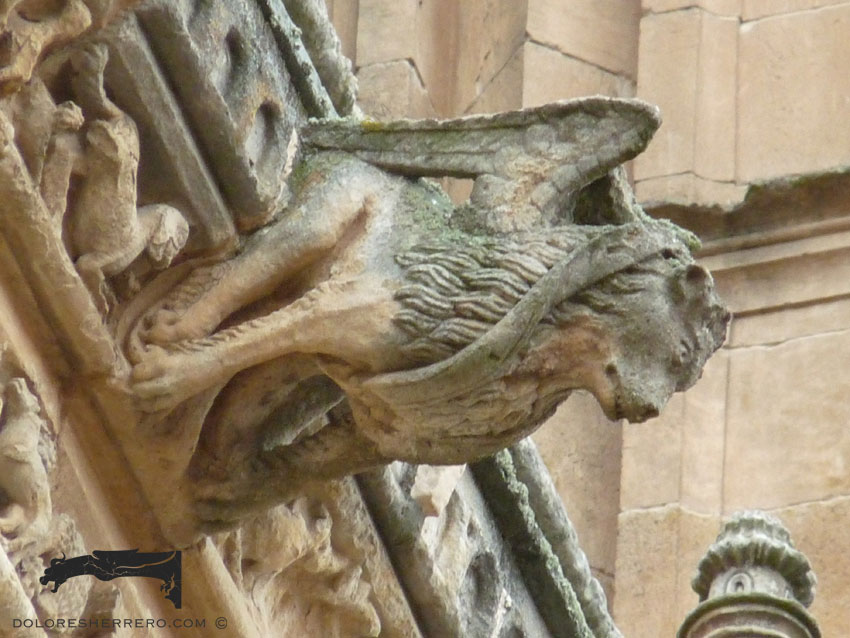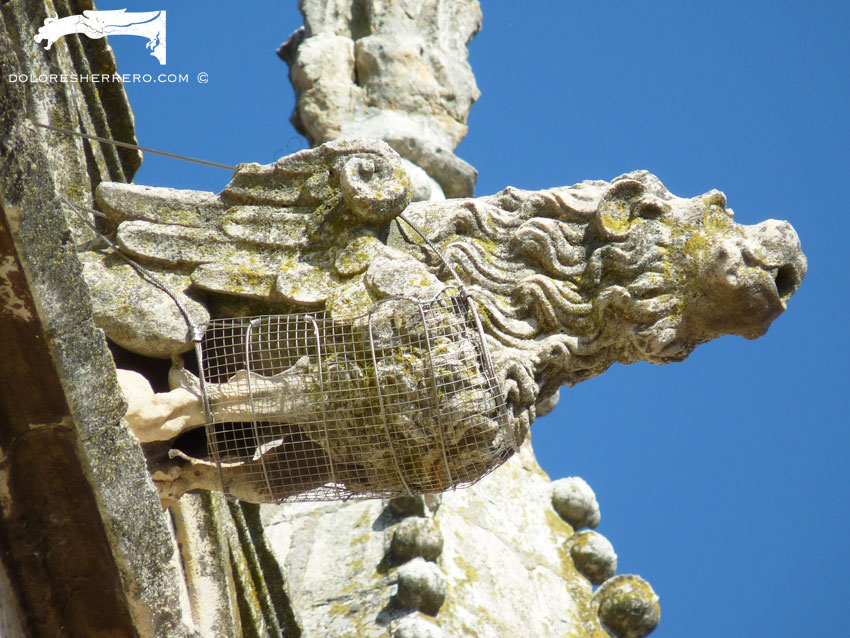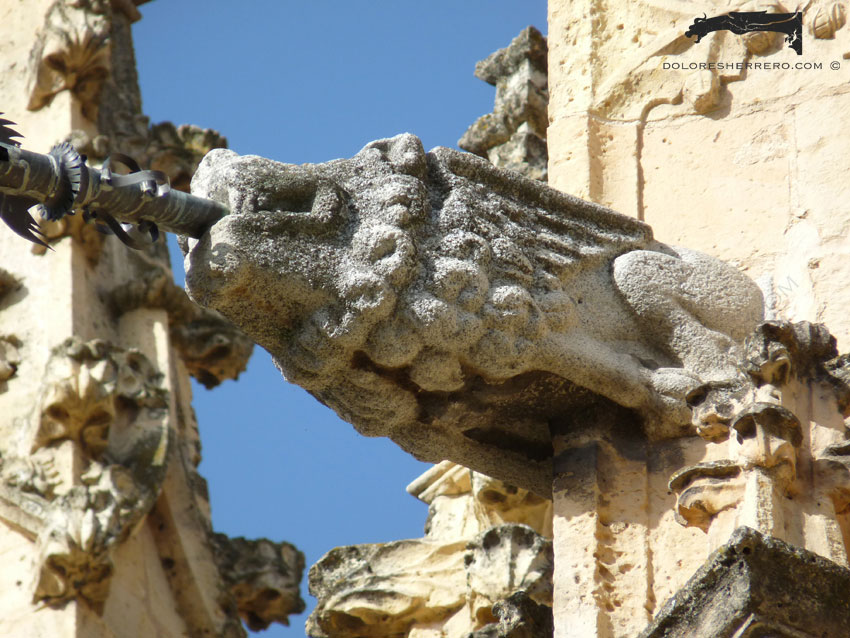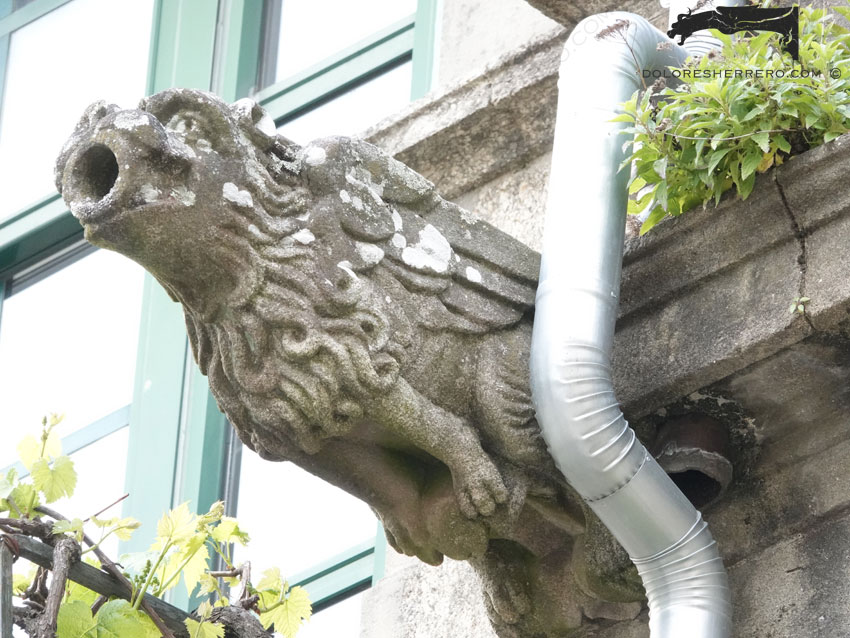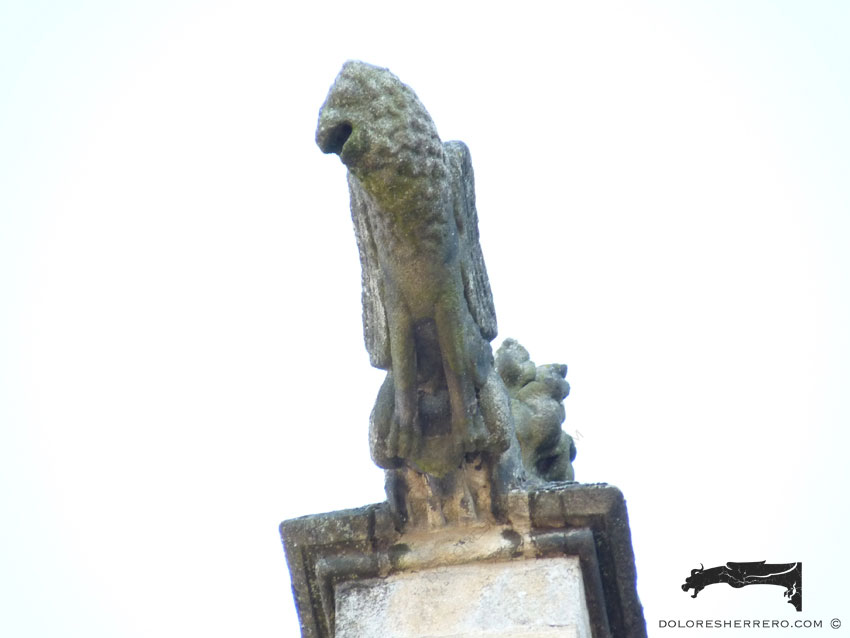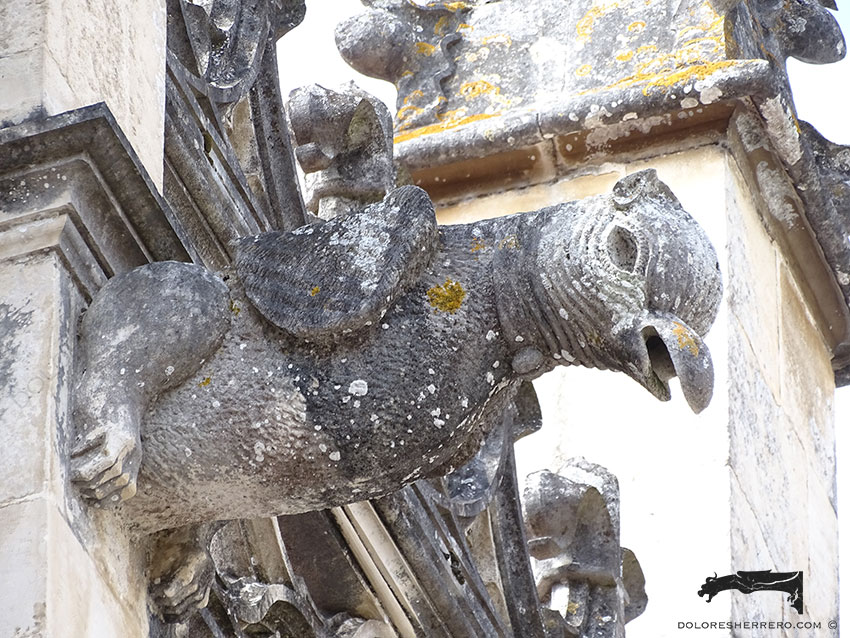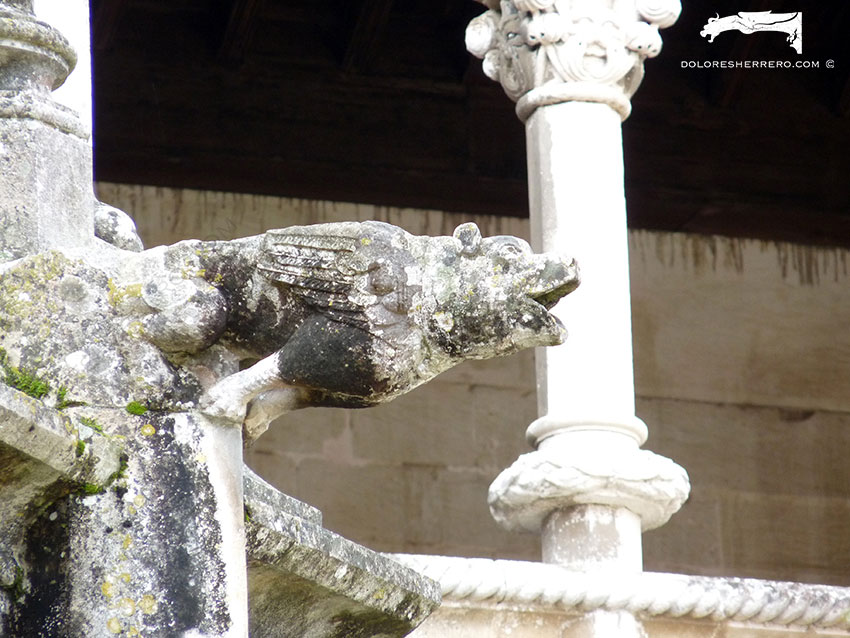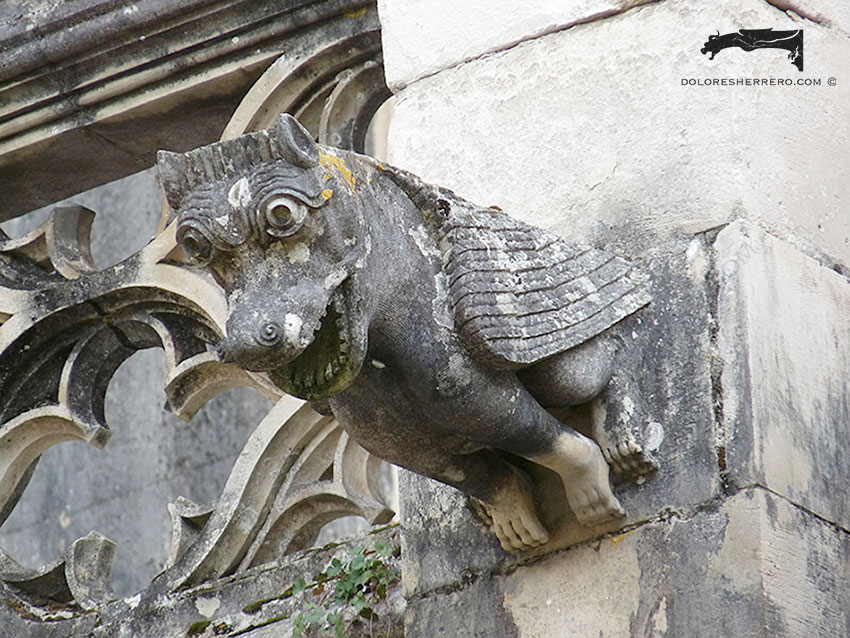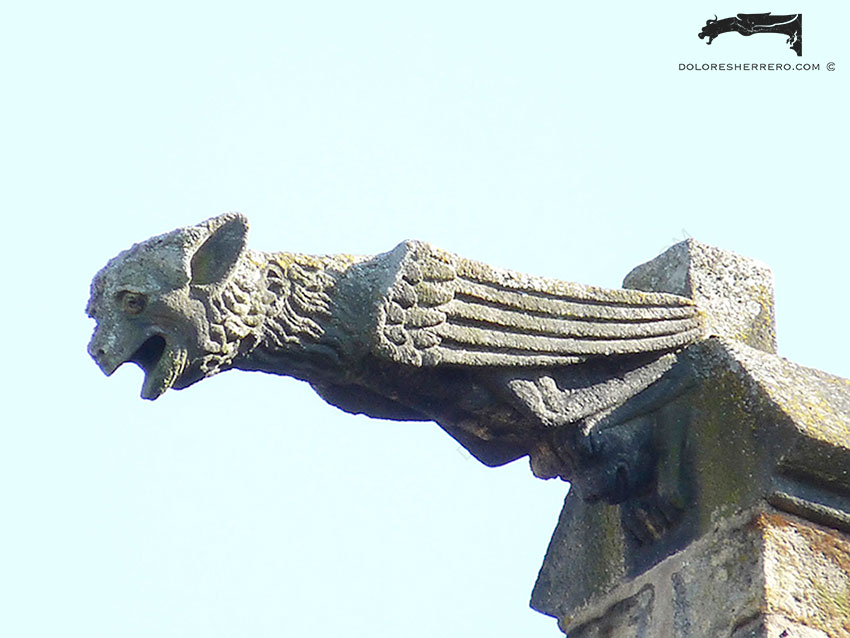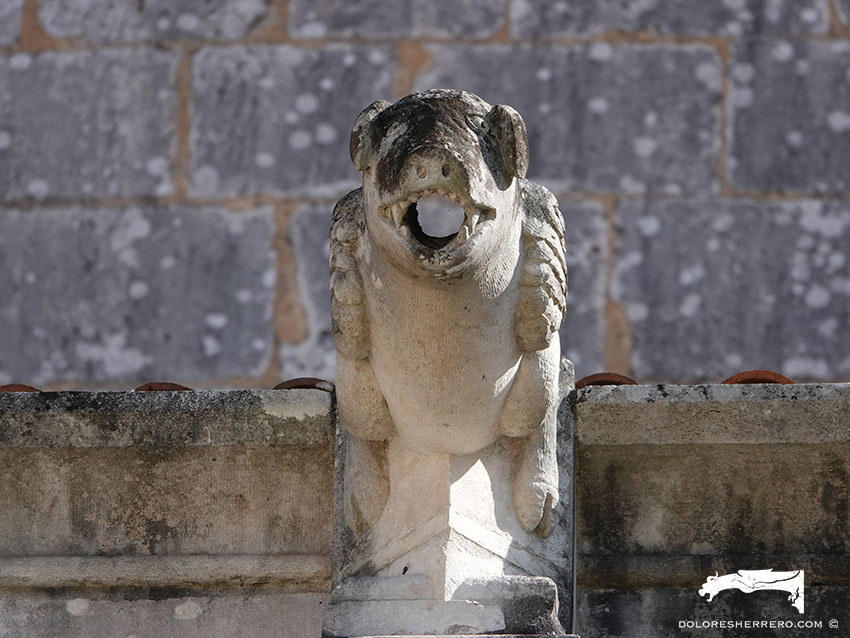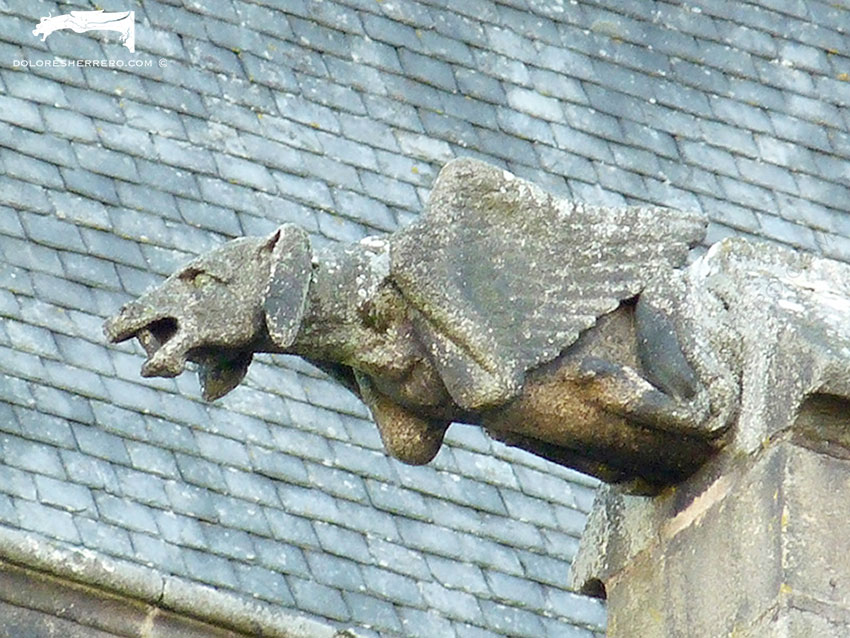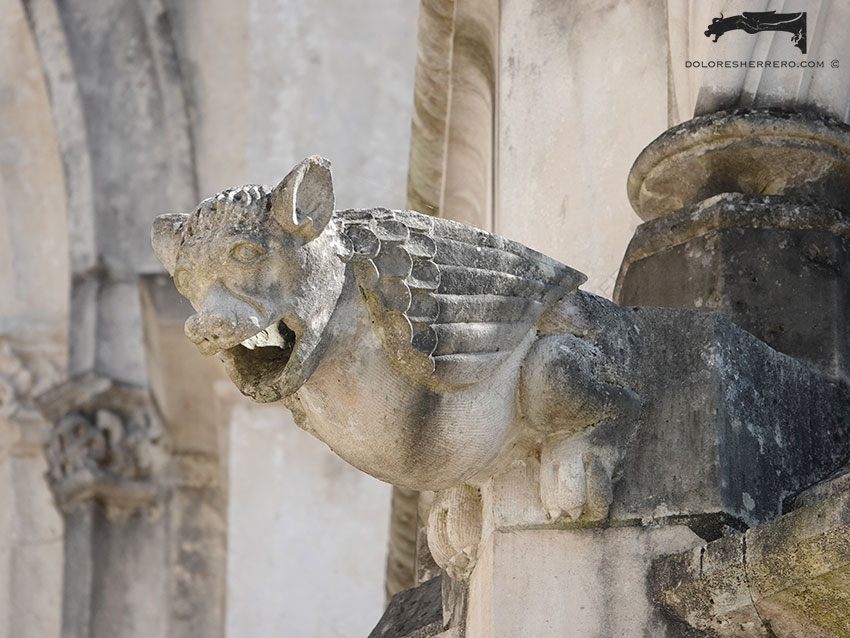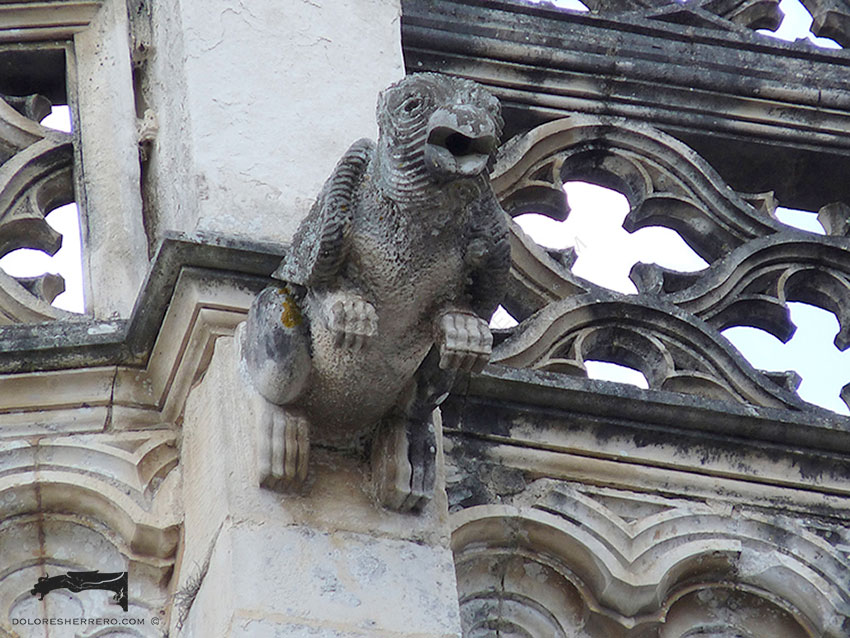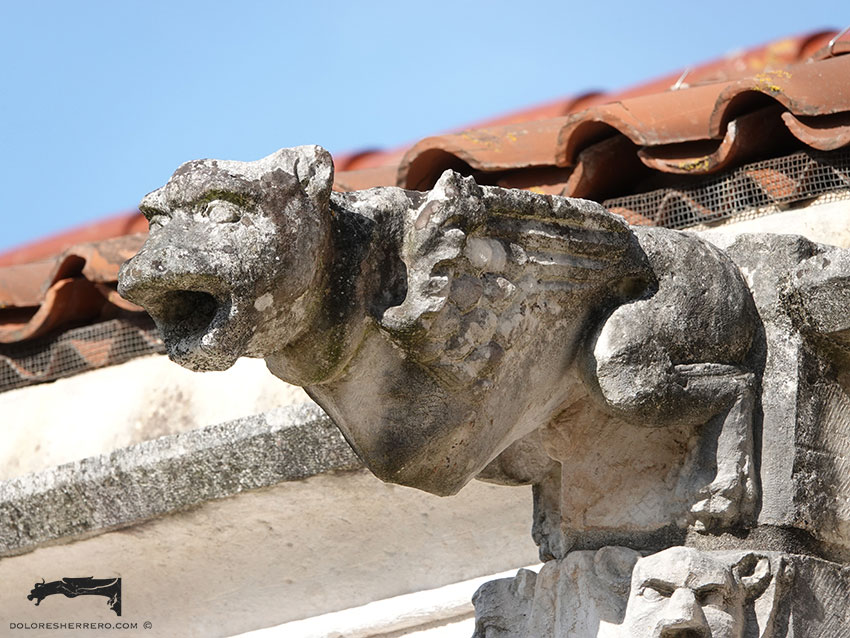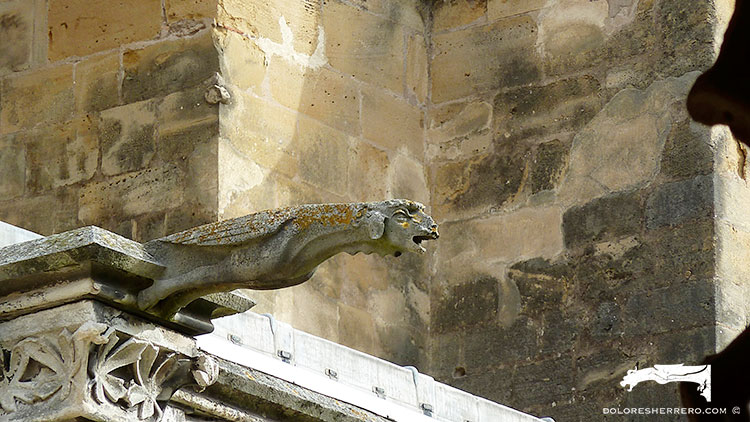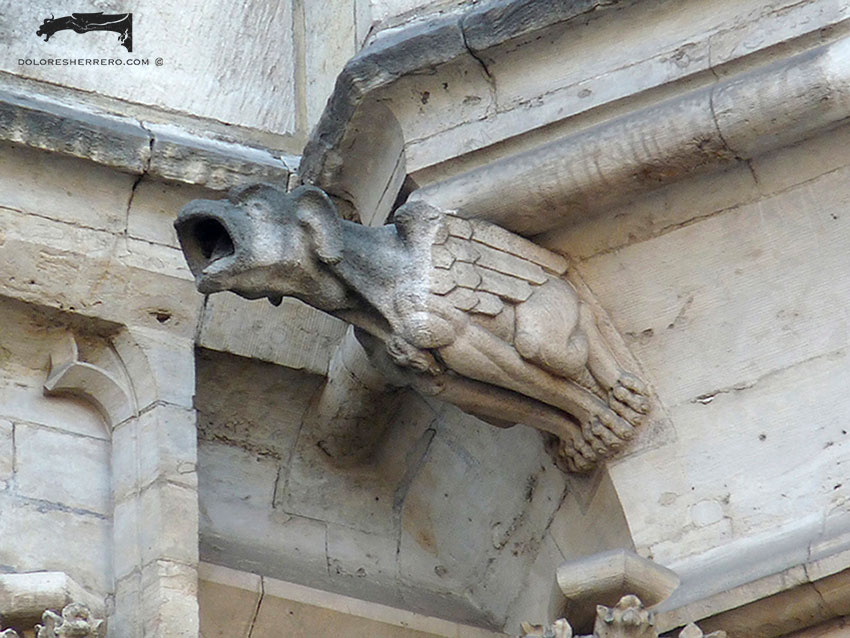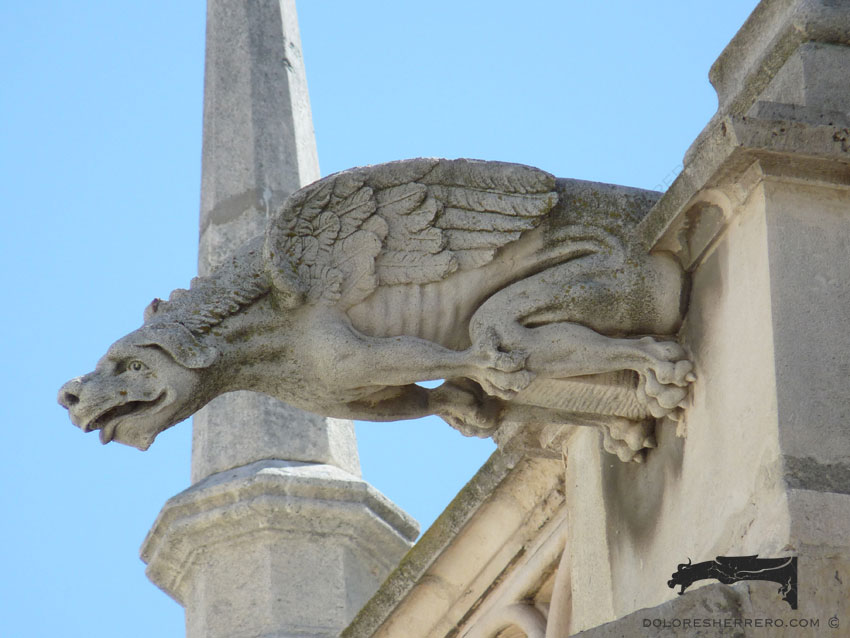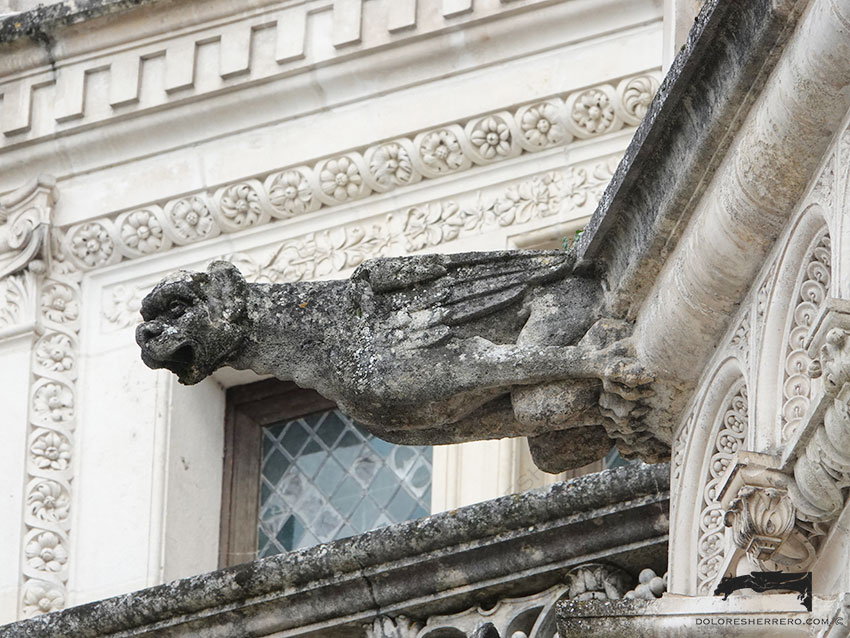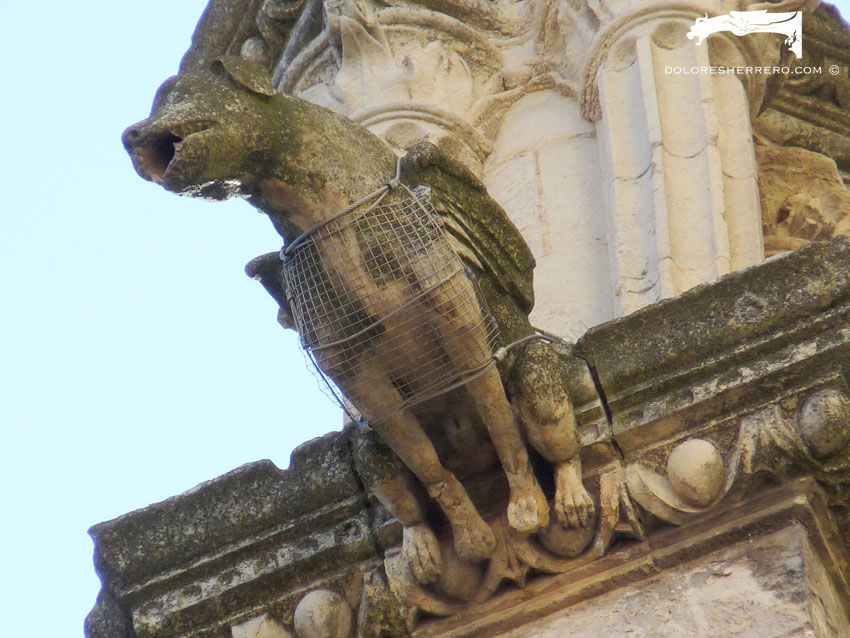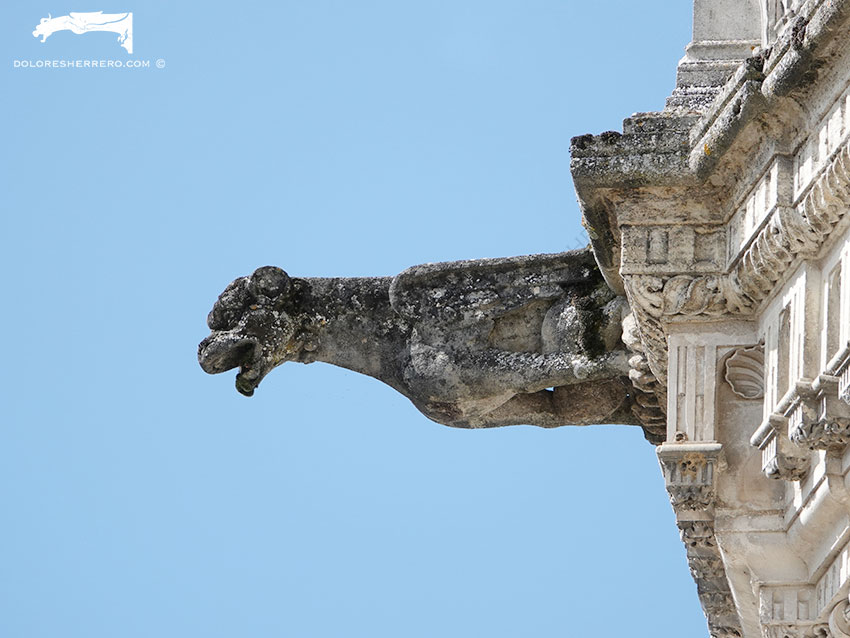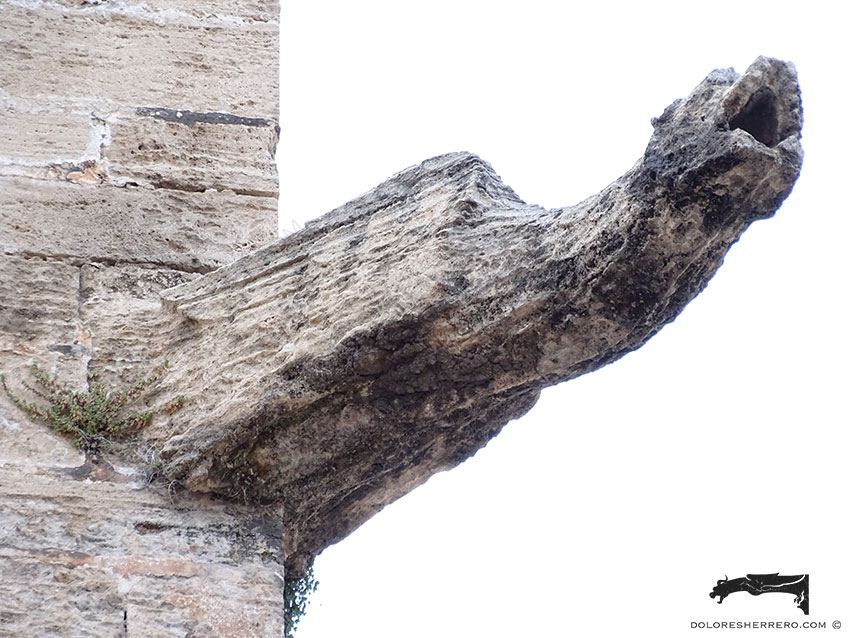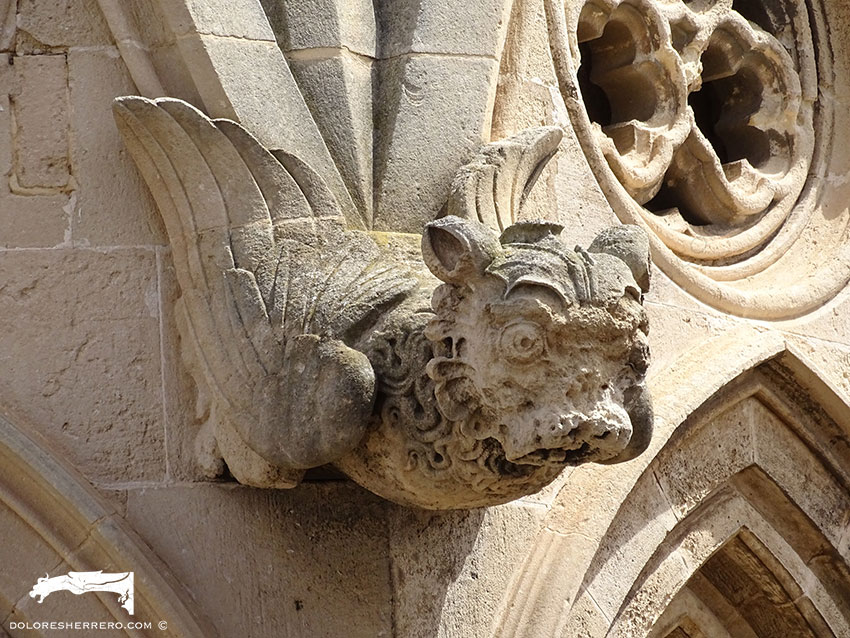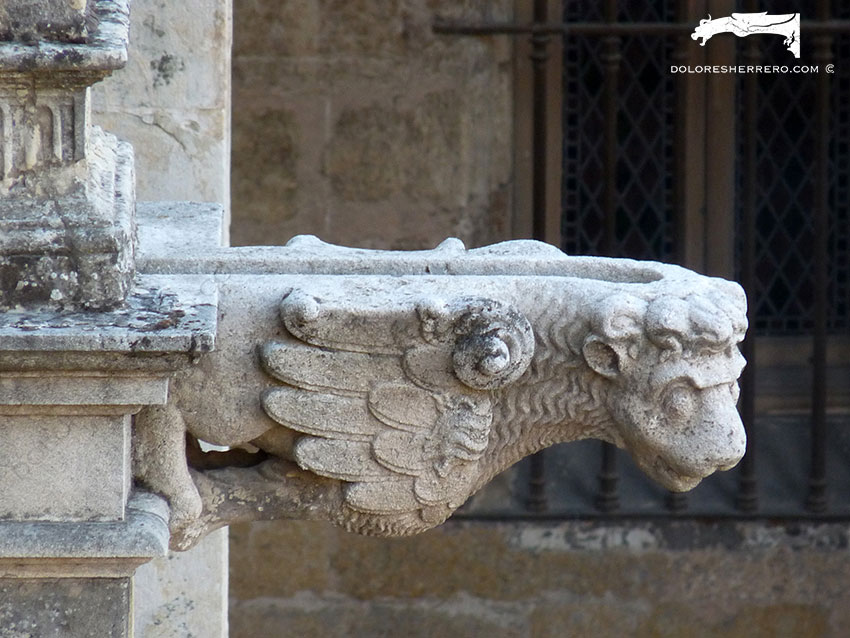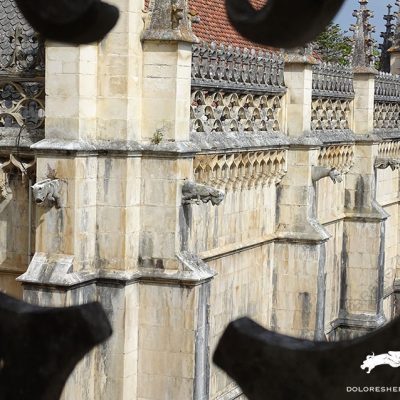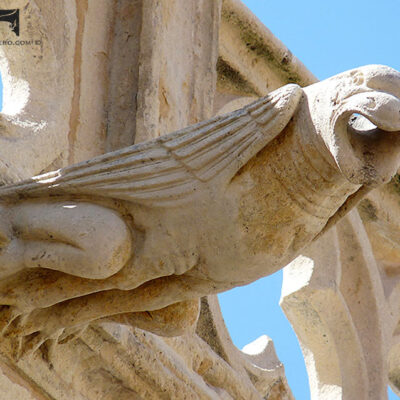Gargoyles
In our discussion of the various types of gargoyles, animal monsters were included in our classification.
Animal monsters are hybrid creatures that come from the combination of various animal body parts, and they tend to be fantastical and incredible creations. The huge variety of possible combinations provides an enormous range of figures for the sculptor and their creative imagination.
Within this typology, the most frequent depiction in gargoyles is that of the winged quadruped. The winged quadruped has appeared in all great civilisations for five thousand years. The four feet are similar to the lion, bull or horse and the wings look like those of an eagle or a falcon. This kind of figure first emerged between the Nile valley and Mesopotamia, spreading from there to Persia, China, Asia Minor, Greece and Italy.
The winged quadruped that best symbolises strength and power is the one with lion’s feet and eagle’s wings. In Jewish and Christian symbolism it has a negative meaning: “All fowls that creep, going upon all four, shall be an abomination unto you” (Lev. 11, 20-21).
The winged lion, with a lion’s body and eagle’s wings, is the most popular depiction in gargoyles. Here we see the lion as the king of earthly animals and the eagle as queen of birds; both animals are symbols of Christology and are commonly seen in gargoyles throughout Spain.
- Convent of Las Úrsulas in Salamanca (Spain)
- Astorga Cathedral (Spain)
- Segovia Cathedral (Spain)
- Salamanca Cathedral (Spain)
- León Cathedral (Spain)
- Segovia Cathedral (Spain)
- Casa da Parra in Santiago de Compostela (Spain)
- Limoges Cathedral (France)
- Segovia Cathedral (Spain)
- Brussels City Hall (Belgium)
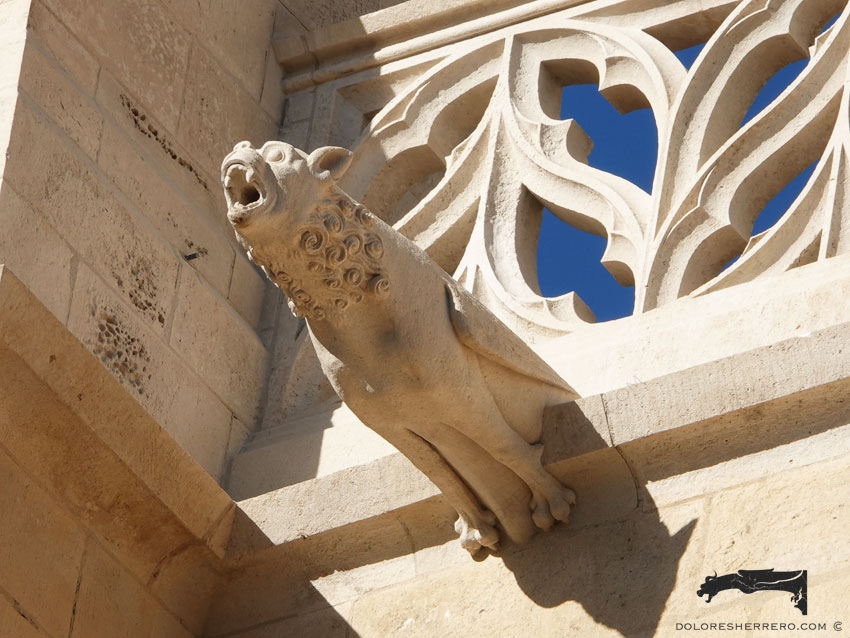
Bayonne Cathedral (France)
You can also find hybrids of all kinds of animal body parts, many of which are superb, fantastical gargoyles born of the imagination and inventiveness of expert sculptors.
- Batalha Monastery (Portugal)
- Alcobaça Monastery (Portugal)
- Batalha Monastery (Portugal)
- Limoges Cathedral (France)
- Alcobaça Monastery (Portugal)
- Limoges Cathedral (France)
- León Cathedral (Spain)
- Alcobaça Monastery (Portugal)
- Cork Cathedral (Ireland)
- Batalha Monastery (Portugal)
- Alcobaça Monastery (Portugal)
- Bayonne Cathedral (France)
- Brussels City Hall (Belgium)
- Palencia Cathedral (Spain)
- Château Royal in Blois (France)
- León Cathedral (Spain)
- Château Royal in Blois (France)
- Valencia Cathedral (Spain)
- Animal monster
- León Cathedral (Spain)
Bibliography consulted
DELACAMPAGNE, A. y C., Animales extraños y fabulosos. Un bestiario fantástico en el arte, Madrid, Editorial Casariego, 2005.
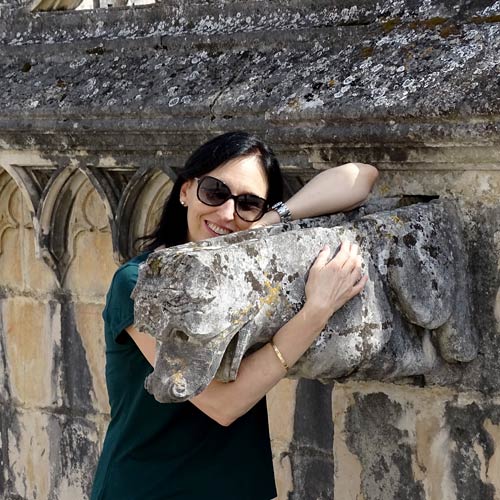
Doctor of Art History and researcher specializing in the study of gargoyles.
I am Dolores Herrero Ferrio, and my thesis, “An Approach to the Study of Gargoyles of Gothic Cathedrals in Castilla and León”, is dedicated to the study of these fascinating figures.
If you like gargoyles and art history, you will also enjoy my book, “The Gargoyle and Its Iconography,” a book I have written with great care for those interested in the world of gargoyles.
I have created my own Encyclopedia of Gargoyles, a Gargopedia to share with you, where you will discover all the secrets and wonders of these enigmatic sculptures.
I hope you enjoy this Gargopedia as much as I have enjoyed creating it, and remember that each gargoyle has a story to tell, and here you will discover them all.

